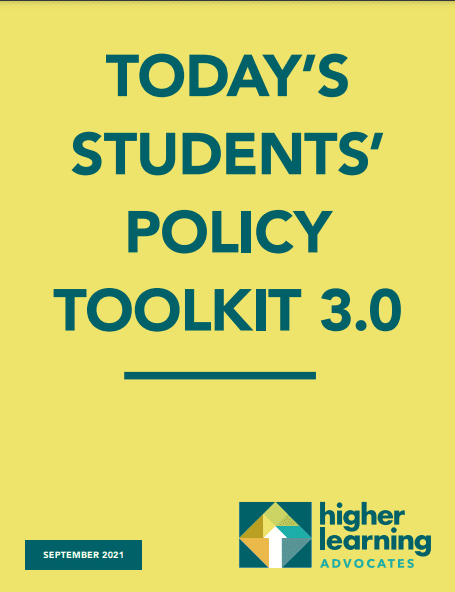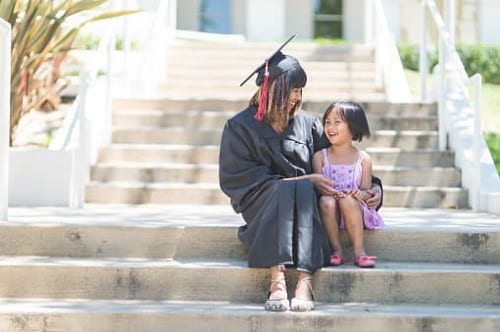Policy Reports
What Works for Today’s Students: Connecting Students to Means-Tested Benefits
Students facing basic needs insecurities are significantly less likely to leave college without completing an associate’s or bachelor’s degree. Today’s students show a great deal of resilience in the face of adversity—but succeeding in an academic environment is extremely difficult without access to basic needs, like food and shelter. The federal government has various programs…
Policy Toolkit 3.0
Today’s students are more diverse than any previous generation of college students: they’re diverse in age, race, and income level. They’re more mobile and may not live on campus. Most participate in the workforce, either full-time or part-time. Work and family responsibilities beyond the classroom—whether that is on-campus or online—often compete with the educational goals…
Ensuring Quality of Online Education Programs
In spring 2020, as the coronavirus pandemic swept across the country, colleges and universities swiftly shuttered their campuses to students, unsure of for how long or what was coming next. As faculty scrambled to continue their courses virtually, they utilized emergency remote learning to deliver course content like lectures and seminars, facilitated online assessments, and…
Ensuring Equity: Policy Recommendations to Increase the Diversity of Selective Public Institutions of Higher Education
Not all institutions of higher education are equal—in their funding, resources, or student outcomes. Selective public institutions, typically defined as those with lower acceptance rates and high graduation rates compared to other public institutions, often offer the best odds for their students to succeed. Enrollment at selective institutions is correlated with student success, including higher…
The Playbook for Today’s Students
Higher learning is the ticket to economic opportunity for Americans, as well as to rebuilding our country’s economy. But we are failing too many of today’s students. Fewer than 67% of Americans enter a higher education program, and of those, only 60 percent finish with a credential. A large-scale overhaul of higher education policy is…
What Works for Today’s Students: Increasing Diversity at Selective Institutions
Low-income, Black, and Latinx students are underrepresented at selective colleges and universities. Only 34 percent of low-income students with high standardized test scores will enroll at the nation’s most selective colleges, compared to 78 percent of students in the highest economic quartile. And only 19 percent of Black and Latinx students with high test scores…
Using Earnings Metrics for Accountability
By Robert Kelchen, Associate Professor, Seton Hall University Commissioned by Higher Learning Advocates The main reason why most students go to college is for a better future, including better labor market outcomes and higher wages. A national survey of full-time students entering four-year colleges shows that 85 percent of respondents considered getting a better job…
Policy Brief: Expand the Child and Dependent Care Tax Credit to Include Student Caregivers
Access to affordable child care is crucial for families: In 2010, fewer than one-third of children had a full-time stay at home parent, and the majority of children under five received child care from someone other than a parent. At the same time, data from the 2014 Survey of Income and Program Participation (SIPP) show…




